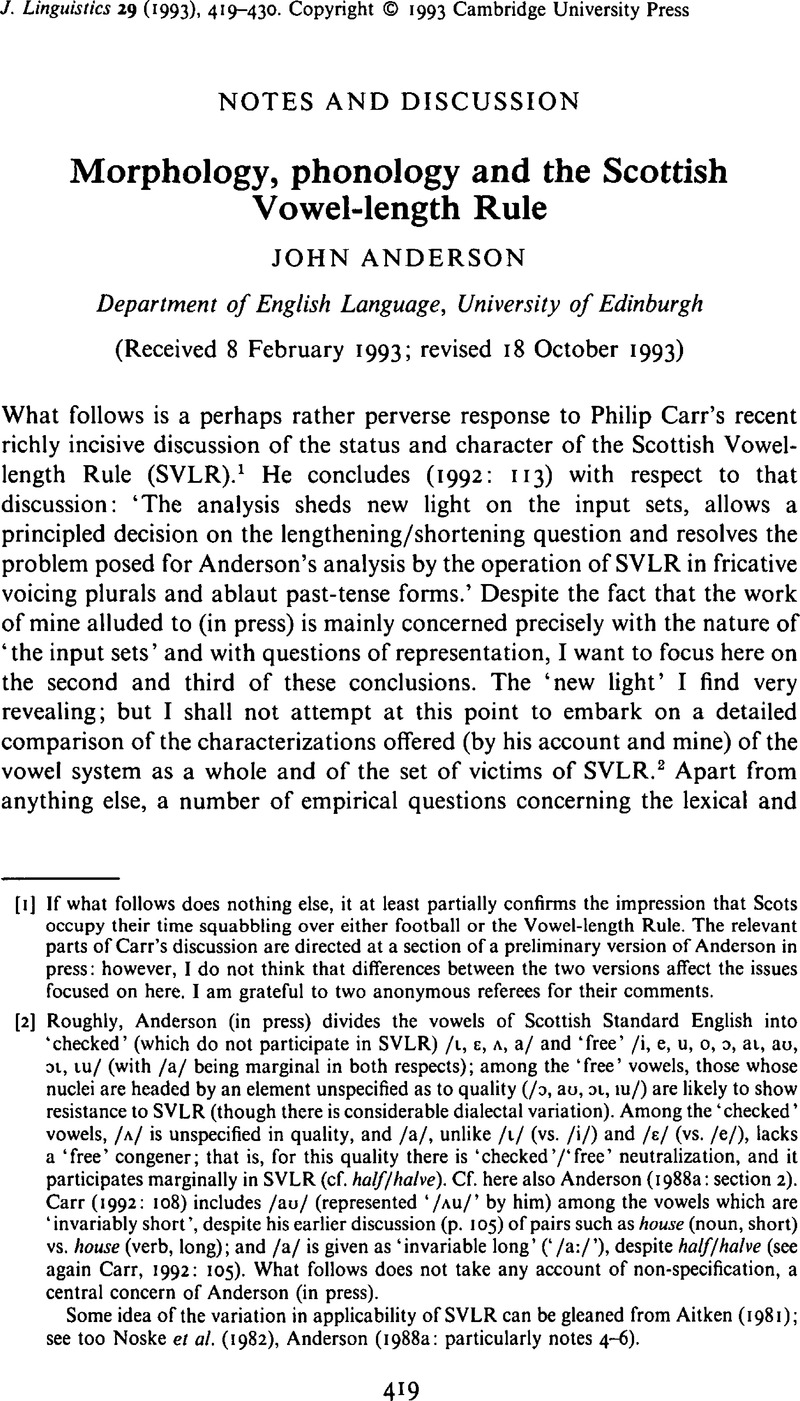Anderson, J. M. (
1988b). Old English ablaut again: the essentially concrete character of dependency phonology. In
Duncan-Rose, C. &
Vennemann, T. (eds.)
On language: rhetorica, phonologica, syntactica. A festschrift for Robert P. Stockwell from his friends and colleagues.
London:
Routledge.
161–
182.
Google Scholar 